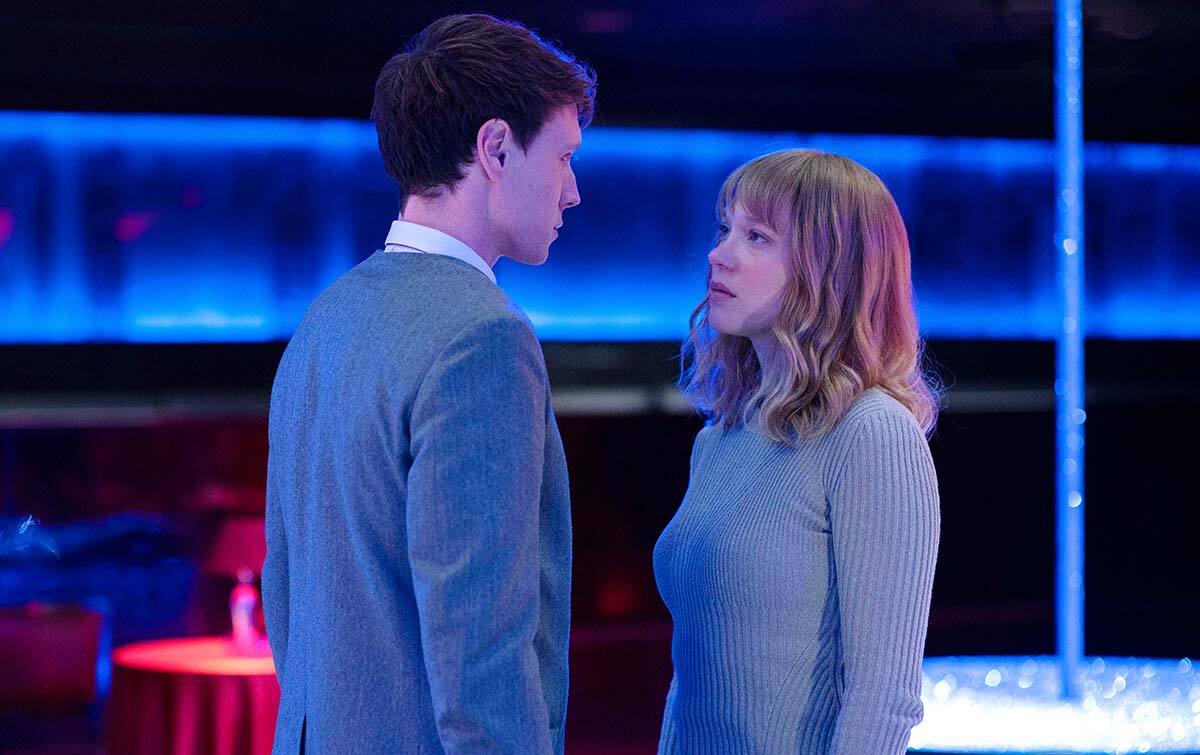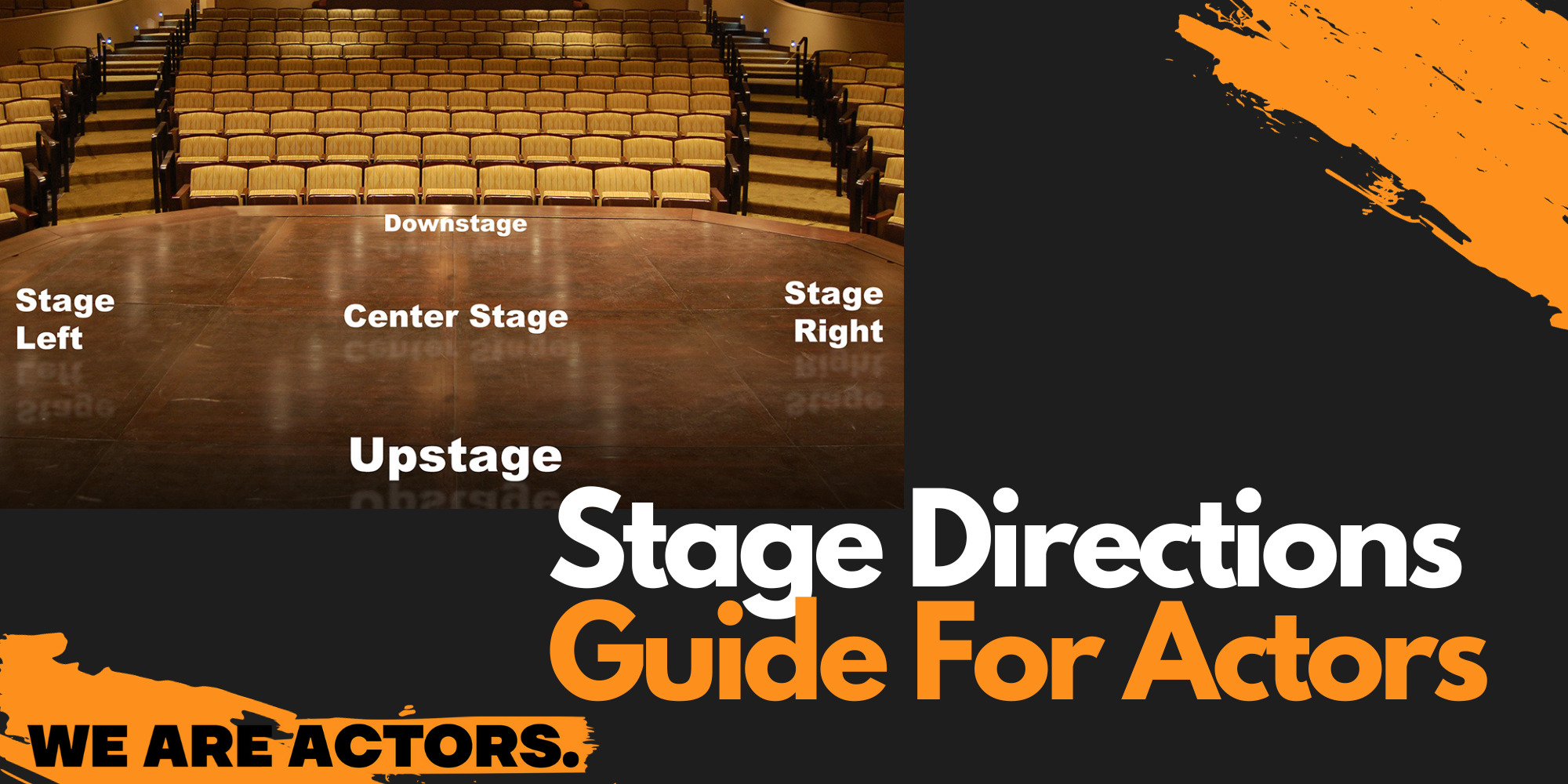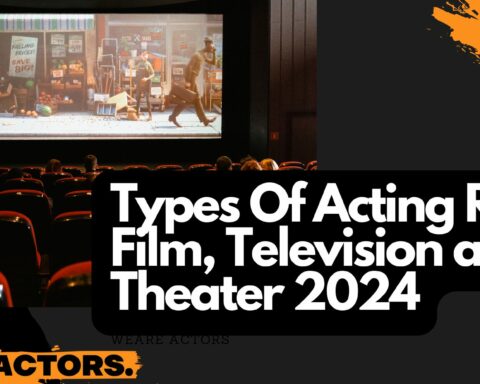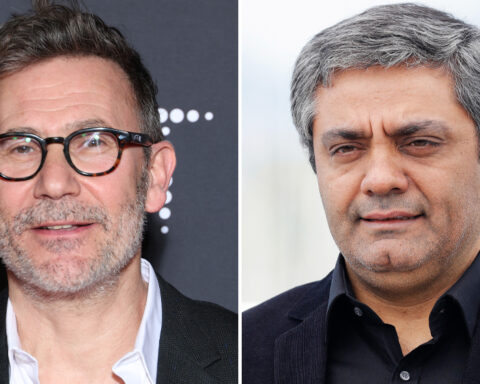
You didn’t expect French filmmaker Bertrand Bonello to make a conventional sci-fi, did you? Good, because “The Beast” is far from it. It all starts in 2044 with beautiful actress Gabrielle (Léa Seydoux) in desperate need of a job. To get it, she’ll have to conform to the new normal in this quasi-dystopian society where the frigid efficiency of AI has deemed human emotions unproductive and downright dangerous.
The solution to this nagging little human problem is simple: to eliminate the futile intensity of emotions altogether. For this, humans are submerged in a bathtub filled with a black goo reminiscent of Jonathan Glazer’s “Under the Skin” in order to get their DNA cleansed by revisiting memories of their past lives—not a mythological idea here, but a scientifically proven one. Hesitant at first but worn over by the weight of unemployment, Gabrielle steps into this tub-turned-time-machine (no, not the Steve Pink one).
Bonello found the inspiration for his Venice Film Festival competition title in Henry James’ novella The Beast in the Jungle but flipped the book’s protagonists to tell a story with “a woman at its center.” “The Beast” is framed through Gabrielle’s point of view as she realizes she has met and fallen in love with Louis (George MacKay) many times over many existences. They first meet in 1910 during a lavish party at a Parisian manor and are instantly drawn to one another, a connection they come to feel every time destiny brings them together once more.
And again and again, they meet, repetition the guiding force of “The Beast.” Words, motifs, and objects follow Gabrielle in whatever time and place she finds herself; Bonello plays with déjavu to resignify a rotating parade of omens, from pigeons to creepy dolls. The first hour of the film is dedicated to understanding the early dynamics of the central relationship and introducing many of the themes the director will come to revisit throughout the 146-minute movie. This first chapter is unhurried and laborious, so very much so it feels easy to dismiss Bonello’s potential for the provocative with how conventionally it all plays out. Girl meets boy, girl is taken, boy is heartbroken, tragedy ensues.
But for those blessed with the gift of patience, the payoff is oh-so-very sweet. Once Louis and Gabrielle leave the Belle Époque and painfully stumble towards the wonders of modernity, “The Beast” finally begins to fulfill its promise. With the passage of time, ideas of rejection and gendered stereotypes are freed from the shackles of polite society and unleashed into the violently self-involved times we all live in now. It is in this very shift that MacKay finds his stride; trading muted civility for unhinged misogyny as he embodies a raging incel in 2014, the very same year 22-year-old Rodger Elliott murdered six people and injured fourteen others in two misogynistic terror attacks that came to be known as the 2014 Isla Vista killings.
Incel Louis Lewanski is in a state of constant anger thanks to a lifetime of female rebuttals, none of which are his fault, of course. “Look how fabulous I look!” he exclaims to his phone camera while on one of his many online rants. How could a perfectly groomed gentleman who drives a pristinely polished 4×4 not be able to score a chick? It turns out Elliott asked himself the same question in a video and a lengthy autobiographical manifesto shot moments before the beginning of one of the infamous acts of misogynistic extremism to date.
The 2014 section of the film dramatically resembles Bonello’s 2022 “Coma” in its balancing of dark humor and a sober grasp on the anxious chaos of hyperconnected modernity. This abrupt change in tone within “The Beast” is not only welcome but raucously entertaining, with MacKay and Séydoux feeding off each other’s contrasting characters, his quiet rage bubbling up at the thought of Gabrielle’s kindness standing for contemptuous mockery. This slice of the film is also a testament to Bonello’s ability to seesaw between genres, turning the corner from period drama straight into a horror satire without ever tampering with the rhythms that allow for the build-up to the film’s grand finale.
Although it is true that “The Beast” would greatly benefit from a gentle trimming in its first hour, it is easy to forgive the indulgence when the result is such a remarkable commentary on the looming threats of artificial intelligence and the dangers of glorified emotional numbness. If “Coma” played as an unconventional love letter to Bonello’s teenage daughter, his latest unravels as an eerie warning: although it may classify as sci-fi, “The Beast” is far, far from dystopia. [B+]







